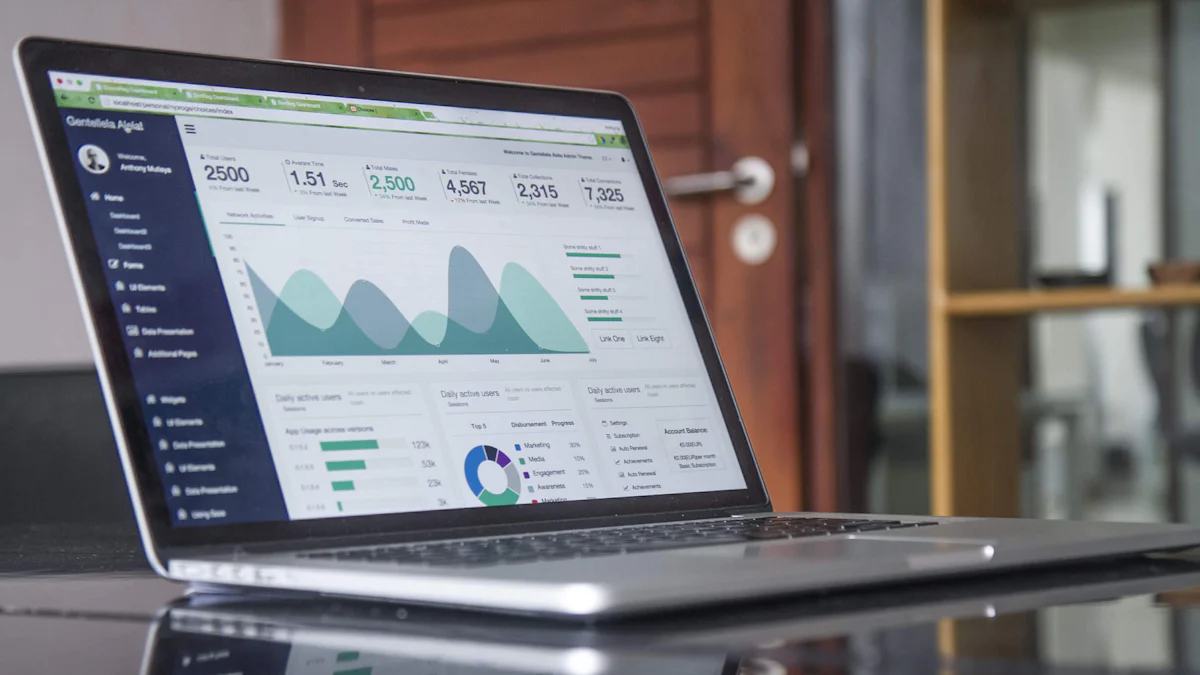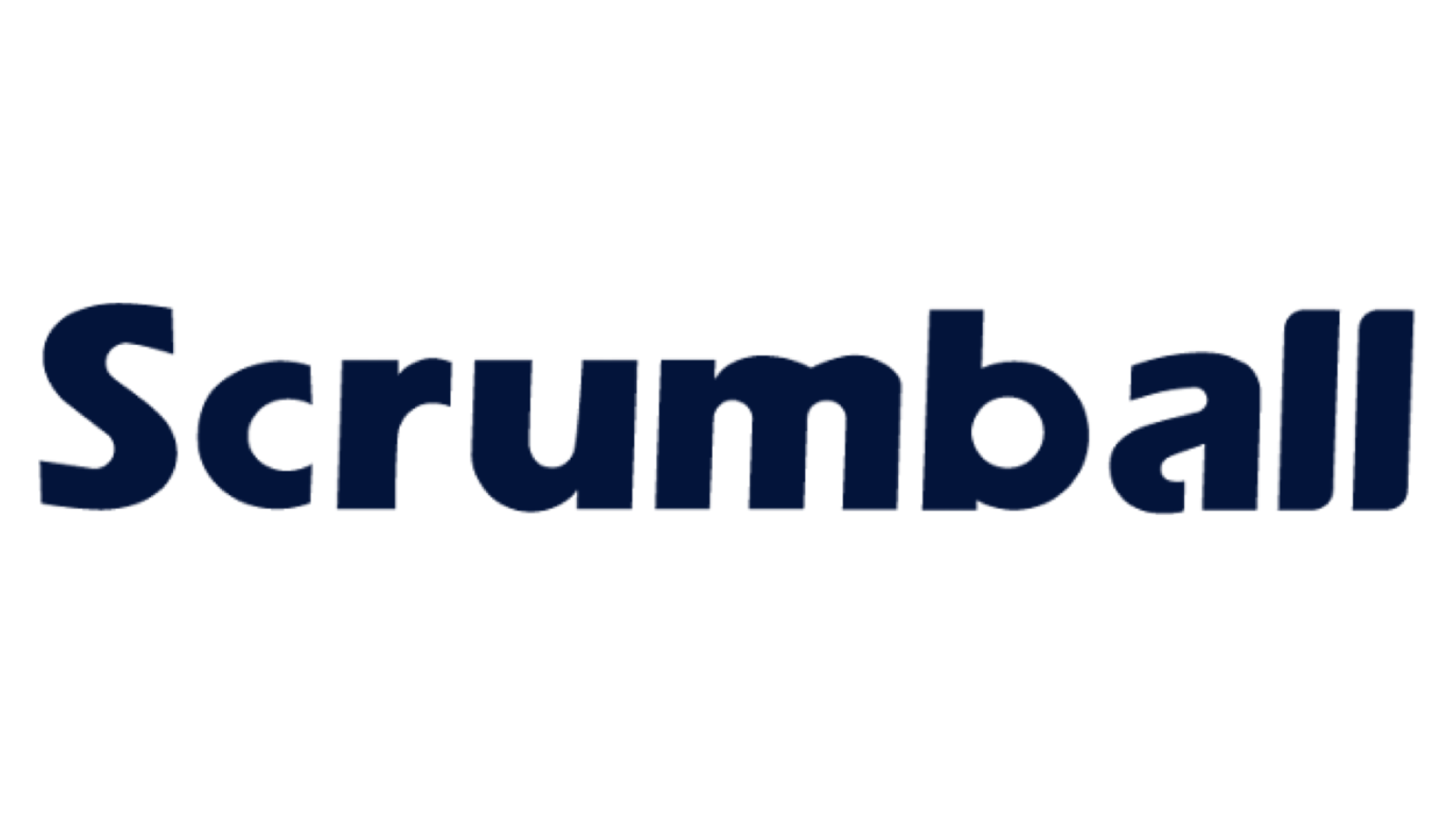Top Marketing Automation Platforms for Businesses in 2025

Marketing automation platforms are transforming how businesses operate in 2025. But what is a marketing automation platform? These tools streamline repetitive tasks, such as email campaigns and social media management, allowing you to focus on strategy and growth. With 70% of marketers planning to increase their investment in automation, it’s clear that these platforms are no longer optional—they’re essential. Businesses are leveraging AI to personalize customer experiences and improve engagement across channels. This comparison guide will help you navigate the options and choose the right platform to maximize efficiency and ROI.
What Is a Marketing Automation Platform?

Definition and Purpose
A marketing automation platform is a software solution designed to streamline and automate repetitive marketing tasks. It originated from basic customer relationship management (CRM) systems in the early 1990s. Over time, it evolved into a comprehensive marketing automation system that integrates multiple functions, such as email campaigns, lead management, and analytics. Today, marketing automation platforms are essential for businesses to manage customer interactions across various channels efficiently.
These platforms allow you to send automated messages, track leads, and execute targeted campaigns. They are a cornerstone of modern marketing strategies, enabling you to focus on creativity and strategy rather than manual tasks. Whether you're running inbound campaigns or account-based marketing, a marketing automation platform ensures your efforts are efficient and impactful.
Benefits for Businesses
Streamlining Marketing Workflows
Marketing automation platforms eliminate repetitive tasks, such as scheduling emails or posting on social media. This saves time and allows your team to focus on higher-value activities. With automation, you can plan, execute, and monitor campaigns seamlessly, ensuring consistent messaging across all channels.
Improving Customer Engagement
These platforms excel at targeting and segmentation. By analyzing customer data, they enable you to deliver personalized messages that resonate with your audience. This level of customization boosts engagement and builds stronger relationships with your customers.
Enhancing ROI and Efficiency
Marketing automation platforms provide robust analytics to measure the success of your campaigns. They help you identify what works and what doesn’t, ensuring you allocate resources effectively. Businesses using these tools report a 451% increase in qualified leads and significant improvements in ROI.
Types of Businesses That Benefit
B2B Companies
B2B marketing automation focuses on nurturing long-term relationships. These platforms help you manage complex sales cycles by automating lead scoring and nurturing. They also enable you to use industry-specific language to establish trust with decision-makers.
B2C Companies
For B2C businesses, marketing automation platforms prioritize quick, transactional relationships. They allow you to create memorable campaigns that drive repeat purchases. Features like social media integration and personalized messaging enhance customer loyalty.
Hybrid Models (B2B and B2C)
Hybrid businesses benefit from the flexibility of marketing automation platforms. These tools adapt to both long-term relationship building and short-term transactional goals. They provide the scalability needed to cater to diverse customer bases effectively.
Key Factors to Consider When Choosing a Marketing Automation Platform
Ease of Use
When evaluating a marketing automation platform, ease of use should be your top priority. A user-friendly interface ensures your team can quickly adapt and maximize the platform's potential. However, many businesses face challenges such as:
- Complexity of setup
- Integration issues with existing tools
- Poor data quality
- Over-automation leading to robotic interactions
- Resistance to change within teams
To overcome these hurdles, look for platforms with intuitive dashboards, clear workflows, and robust training resources. A seamless onboarding process can save time and reduce frustration, allowing you to focus on creating impactful campaigns.
Scalability and Flexibility
Your marketing automation platform must grow with your business. Scalability ensures the platform can handle increasing demands, while flexibility allows it to adapt to your evolving needs. Automation tools should efficiently manage repetitive tasks, maintain high-quality customer engagement, and provide actionable insights through analytics.
To assess scalability and flexibility, consider these steps:
- Evaluate workflow automation and lead nurturing capabilities.
- Check integration with CRM systems and other tools.
- Analyze lead generation and customer segmentation features.
- Review campaign management and personalization options.
- Examine reporting and analytics functionalities.
A scalable platform ensures your marketing efforts remain effective as your business expands.
Features and Functionality
The right marketing automation platform offers a suite of features and functionality to meet your goals. Here are three must-have capabilities:
Email Marketing Automation
Email marketing remains a cornerstone of b2b marketing automation. Platforms with advanced email marketing tools allow you to create personalized, automated flows that resonate with your audience. Look for features like segmentation, A/B testing, and dynamic content to boost engagement.
Lead Scoring and Nurturing
Effective lead management is critical for b2b marketing automation. Platforms with lead scoring help you prioritize prospects based on their likelihood to convert. Nurturing tools guide leads through the sales funnel with tailored content, ensuring no opportunity is missed.
Analytics and Reporting
Robust reporting and analytics are essential for measuring success. These tools provide insights into campaign performance, helping you refine strategies and allocate resources effectively. A platform with comprehensive analytics ensures you stay data-driven in your decision-making.
Integrations with Other Tools
A marketing automation platform must seamlessly integrate with the tools you already use to ensure smooth workflows and data consistency. Without proper integration, your marketing efforts can become fragmented, leading to inefficiencies and missed opportunities.
The most essential integrations include CRM systems like Salesforce, which allow you to synchronize customer data and streamline lead management. Social media platforms such as Facebook and LinkedIn are also critical, enabling you to post content directly and engage with your audience in real time. Additionally, e-commerce platforms like Shopify and WooCommerce help you track customer purchases and create targeted campaigns.
| Tool | Integration Type |
|---|---|
| Shopify | E-commerce |
| WooCommerce | E-commerce |
| Google Analytics | Analytics |
When choosing a marketing automation platform, prioritize one that supports these integrations. This ensures your tools work together harmoniously, saving time and improving efficiency. A well-integrated system enhances your ability to execute b2b marketing automation strategies effectively, driving better results for your business.
Pricing and Budget Considerations
The cost of a marketing automation platform varies widely, so understanding your budget is crucial. Pricing ranges from free options to premium plans exceeding $2,000 per month. Most platforms offer subscription models with monthly or annual billing, giving you flexibility in managing expenses.
Plans often depend on user count and feature sets. For example, basic plans may include email marketing and analytics, while advanced options offer lead scoring, CRM integration, and more. Carefully evaluate the features you need to avoid overpaying for unnecessary tools.
While cost is a significant factor, consider the potential ROI. A well-chosen platform can boost efficiency, improve customer engagement, and ultimately increase revenue. Balancing cost and ROI ensures you make a smart investment for your business.
Customer Support and Resources
Reliable customer support is essential when adopting a marketing automation platform. Even the most user-friendly tools can present challenges, and having access to expert assistance can save you time and frustration.
Look for platforms that offer multiple support channels, such as live chat, email, and phone support. Comprehensive knowledge bases, tutorials, and community forums are also valuable resources. These tools empower you to troubleshoot issues independently and maximize the platform’s potential.
Strong customer support ensures you can fully leverage b2b marketing automation features, keeping your campaigns running smoothly. Choose a platform that prioritizes your success by providing the resources you need to thrive.
Best Marketing Automation Platforms for Businesses in 2025

HubSpot
Key Features
HubSpot stands out as one of the best marketing automation platforms due to its robust features and scalability. Here’s what you can expect:
| Feature | Description |
|---|---|
| Advanced marketing automation | Create sophisticated, multi-step workflows with numerous triggers, conditions, and actions. |
| Omnichannel automation | Engage customers seamlessly across multiple channels. |
| Custom reporting and analytics | Dive deep into data with customizable dashboards and reports. |
| Unified platform | Streamlines operations, saving time and reducing complexity. |
| Scalability | Grows with your business, allowing you to unlock advanced features as needed. |
| Excellent support and community | Responsive customer service and resources like HubSpot Academy ensure help is always available. |
Additionally, HubSpot offers unlimited users and supports up to one million contacts, making it ideal for growing businesses.
Pros and Cons
| Advantages | Description |
|---|---|
| All-in-One Platform | Integrates various sales and marketing tools, reducing the need for multiple systems. |
| Easy to Use | User-friendly design with drag-and-drop functionalities. |
| Free CRM Features | Access essential tools without initial investment. |
| Educational Resources | HubSpot Academy provides articles and courses to maximize platform usage. |
| Disadvantages | Description |
|---|---|
| Can Be Costly | Advanced features start at $890 per month, which may strain small business budgets. |
| Template Customization Challenges | Customizing templates may require technical skills. |
| Limited Free Version | The free plan includes HubSpot branding and lacks omnichannel automation. |
| Learning Curve for Advanced Tools | Advanced features may require external assistance, adding to costs. |
Pricing Overview
HubSpot offers a free plan with basic email marketing and CRM tools. Paid plans start at $50 per month for small teams, while the Professional plan begins at $890 per month. The Enterprise plan, designed for large-scale businesses, costs upwards of $3,200 monthly.
Marketo Engage (Adobe)
Key Features
Marketo Engage excels in delivering comprehensive tools for b2b marketing automation. Its standout features include:
- Omnichannel engagement tools to connect with customers across platforms.
- Predictive content that enhances lead conversions.
- Advanced attribution models for granular insights into campaign performance.
- Scalability to support businesses of all sizes.
Pros and Cons
Pros:
- Comprehensive tools for omnichannel engagement.
- Predictive content boosts lead conversions.
- Advanced analytics for detailed insights.
- Scalable for businesses of all sizes.
Cons:
- High learning curve for beginners.
- Expensive compared to simpler tools.
- Requires additional training to unlock full potential.
Pricing Overview
Marketo Engage pricing starts at $1,250 per month, making it a premium choice for businesses seeking advanced features. While the cost may seem steep, the platform’s capabilities justify the investment for companies with complex marketing needs.
ActiveCampaign
Key Features
ActiveCampaign combines email marketing, CRM, and automation to deliver personalized customer interactions. Its features include:
- A drag-and-drop automation builder with over 500 pre-built workflows.
- Advanced segmentation for targeted email marketing campaigns.
- Machine learning-powered predictive sending to optimize delivery times.
- Lead scoring to prioritize high-value prospects.
- Over 950 integrations with platforms like Shopify and Salesforce.
Pros and Cons
Pros:
- Comprehensive suite for personalized marketing campaigns.
- Visual automation builder simplifies complex workflows.
- Seamless CRM integration enhances sales and marketing alignment.
- Tracks interactions throughout the sales cycle for better insights.
Cons:
- Mobile engagement features are less robust than competitors.
- Steeper learning curve for new users.
- Onboarding and training may require additional time and resources.
Pricing Overview
ActiveCampaign offers a Lite plan starting at $29 per month, which includes basic email marketing and automation. The Plus plan, at $49 per month, adds CRM and lead scoring. For advanced features like predictive sending, the Professional plan costs $149 monthly.
Pardot (Salesforce Marketing Cloud Account Engagement)
Key Features
Pardot offers a robust suite of features tailored for businesses focused on B2B marketing automation. Its standout features include:
| Feature | Description |
|---|---|
| Lead Scoring and Grading | Scores leads based on interactions and fit, helping prioritize high-value leads. |
| Advanced Reporting | Provides insights into campaign ROI, pipeline performance, and customer engagement. |
| Salesforce Integration | Offers native integrations with Salesforce CRM, ideal for teams already using Salesforce. |
These features make Pardot a powerful tool for managing complex sales cycles and driving better results.
Pros and Cons
| Pros | Cons |
|---|---|
| Seamless integration with Salesforce CRM | May require additional investment in Salesforce products |
| Robust B2B marketing automation features | Less suited for B2C businesses |
| Advanced lead scoring and nurturing capabilities | Steeper learning curve compared to other platforms |
Pardot excels in delivering advanced analytics and lead management tools. However, it may not be the best fit for businesses targeting B2C audiences.
Pricing Overview
Pardot’s pricing starts at $1,250 per month, making it a premium option. While the cost may seem high, the platform’s advanced features and Salesforce integration justify the investment for businesses with complex marketing needs.
Mailchimp
Key Features
Mailchimp is a popular choice for businesses due to its versatility and ease of use. Its key features include:
- User-friendly interface
- Robust automation capabilities
- Integration options
- Personalized email marketing
- Website creation tools
- Social media marketing features
- SMS marketing
- Comprehensive reporting and analytics
- Audience management tools
- AI marketing tools
These features allow you to create impactful campaigns while managing your audience effectively.
Pros and Cons
| Advantages | Description |
|---|---|
| Great template editor | Mailchimp has a clean interface and a powerful editor. |
| Thorough reporting | Provides comprehensive insights including client data, geo-tracking, and social media integration. |
| Endless Integration Options | Offers over 500 integrations, allowing easy incorporation of existing marketing tools. |
| Extra features | Continuously expanding features, including appointment scheduling and AI email creator. |
| Disadvantages | Description |
|---|---|
| High-cost subscription plans | The free plan has low limits, requiring users to upgrade to expensive paid plans. |
| Unfavorable way to count subscribers | Charges for unsubscribed and inactive contacts in the database. |
| No email scheduling on free plan | Recent removal of scheduling feature makes the free plan less appealing. |
Mailchimp’s extensive features make it ideal for businesses of all sizes. However, its pricing structure may not suit smaller budgets.
Pricing Overview
Mailchimp offers a free plan with limited features. Paid plans start at $13 per month, with advanced options costing up to $350 monthly.
Brevo (formerly Sendinblue)
Key Features
Brevo provides a comprehensive set of tools for email marketing and CRM. Its key features include:
- Easy-to-use drag-and-drop email builder with 40+ pre-made templates
- Brand library feature for consistent design using website assets
- Advanced email automation builder with multiple trigger options and pre-made workflows
- Built-in apps for WhatsApp, transactional, and SMS marketing
- Free sales CRM included, unlike many competitors
These features make Brevo a cost-effective solution for businesses seeking powerful automation tools.
Pros and Cons
Pros:
- Powerful automations with intuitive setup
- Segmentation and personalization for targeted marketing
- User-friendly interface with minimal bugs
- Extremely affordable, with a free plan available
Cons:
- Low daily sending limit on the free plan (300 emails per day)
Brevo’s affordability and advanced features make it an excellent choice for businesses on a budget.
Pricing Overview
Brevo offers a free plan with basic features. Paid plans start at $25 per month, providing access to advanced email marketing and automation tools.
Omnisend
Key Features
Omnisend is a powerful marketing automation platform tailored for e-commerce businesses. It offers tools that simplify campaign creation and enhance customer engagement. Here’s what makes Omnisend stand out:
- Focus on e-commerce marketing automation to drive sales.
- Omnichannel marketing capabilities, integrating email, SMS, push notifications, and social media advertising.
- Advanced automation workflows, including pre-built options for cart abandonment, welcome series, and post-purchase follow-ups.
- A product picker tool that enables personalized product recommendations in emails.
- User-friendly email editor and automation builder for seamless campaign creation.
- Integration with over 30 apps, providing flexibility for campaign management.
These features make Omnisend an excellent choice for businesses looking to streamline their marketing efforts while maximizing customer engagement.
Pros and Cons
Omnisend offers several advantages, but it also has some limitations. Here’s a quick comparison:
| Advantages | Limitations |
|---|---|
| Good customer support | Low deliverability rate (75.1%) |
| Ease of integration with e-commerce platforms | Limited integrations with analytics and CRM |
| Product picker tool for emails | Basic email editor lacks advanced features |
| Omnichannel marketing capabilities | No free trial available |
While Omnisend excels in omnichannel marketing and e-commerce integration, its limited analytics integrations and lack of a free trial may deter some users.
Pricing Overview
Omnisend offers flexible pricing plans to cater to businesses of different sizes. The free plan includes basic email marketing features, making it ideal for startups. Paid plans start at $16 per month, offering advanced automation and SMS marketing tools. For larger businesses, custom enterprise plans are available, providing tailored solutions to meet specific needs.
Omnisend’s pricing structure ensures you only pay for what you need, making it a cost-effective option for scaling your marketing efforts.
How to Choose the Right Marketing Automation Platform for Your Business
Assessing Your Business Needs
Identifying Marketing Goals
Start by defining your marketing goals. Are you looking to generate more leads, improve customer retention, or streamline your campaigns? Clear objectives will guide you in selecting a platform that aligns with your strategy. For example, if your goal is lead generation, prioritize platforms with advanced lead scoring and nurturing tools. If customer retention is your focus, look for features like personalized email automation and segmentation.
Understanding Your Target Audience
Understanding your audience is crucial. Analyze their preferences, behaviors, and communication channels. A platform that supports detailed segmentation and omnichannel marketing will help you connect with your audience effectively. For instance, if your audience prefers email communication, choose a platform with robust email marketing capabilities. Tailoring your choice to your audience ensures your campaigns resonate and drive results.
Evaluating Trial Periods and Demos
Trial periods and demos are invaluable when choosing a marketing automation platform. They allow you to test the platform’s usability and compatibility with your team’s workflow. Vendors often provide these opportunities to help you make an informed decision.
Take advantage of trial periods and platform demonstrations offered by vendors. This hands-on experience allows you to assess the platform's usability and compatibility with your team's workflow.
During the trial, involve your marketing and sales teams. Gather their feedback on the platform’s features and ease of use. This collaborative approach ensures the platform meets your team’s needs and enhances productivity.
Considering Long-Term Scalability
Your marketing automation platform should grow with your business. Evaluate its ability to handle increasing demands and adapt to evolving strategies. A scalable platform ensures you won’t outgrow its capabilities as your business expands.
To assess scalability, consider the following:
- Can the platform manage a growing contact list?
- Does it offer advanced features for future needs?
- Will it integrate with additional tools as your tech stack evolves?
Choosing a platform with long-term scalability ensures a sustainable investment. It saves you from the hassle of switching platforms as your business grows.
Aligning with Your Budget and Resources
Choosing the right marketing automation platform requires careful consideration of your budget and available resources. You need to ensure the platform delivers value without straining your finances. Start by evaluating your current marketing expenses and identifying areas where automation can save time and money. This step helps you determine how much you can realistically invest.
Look for platforms that offer flexible pricing plans. Many providers offer tiered options, allowing you to pay only for the features you need. For example, if you’re a small business, a basic plan with essential tools like email automation and analytics might be sufficient. Larger businesses, on the other hand, may benefit from advanced features like lead scoring and omnichannel marketing. Matching the platform’s capabilities to your specific needs ensures you don’t overspend on unnecessary tools.
Consider the hidden costs as well. Some platforms charge extra for add-ons, integrations, or exceeding contact limits. Review the pricing structure carefully to avoid surprises. Free trials and demos can also help you assess whether the platform justifies its cost. Use these opportunities to test the features and ensure they align with your goals.
Finally, think about the resources required to implement and maintain the platform. Does your team have the skills to use it effectively? If not, you may need to invest in training or hire additional staff. Balancing cost, functionality, and resource requirements ensures you choose a platform that supports your growth without exceeding your budget.
Tip: Prioritize platforms that offer scalability. As your business grows, you’ll need a solution that can expand with you.
Marketing automation platforms are essential for businesses in 2025. They save time, improve customer engagement, and boost ROI. Choosing the right platform can transform your marketing efforts and help you achieve your goals.
When selecting a platform, focus on these key factors:
- Features, user experience, and customization options.
- Ease of use, scalability, and integration capabilities.
- Pricing plans that align with your budget.
Platforms like HubSpot, Marketo, and ActiveCampaign cater to different business needs. Evaluate your goals and audience. Test trial versions to find the perfect fit. The right choice will empower your business to thrive in a competitive market.
Take action today. Explore these platforms and unlock your marketing potential!
FAQ
What is the best marketing automation platform for small businesses?
The best platform depends on your needs. For small businesses, Mailchimp and Brevo are excellent choices. They offer affordable plans, user-friendly interfaces, and essential features like email automation and audience segmentation. Start with their free plans to test their capabilities.
Can I integrate a marketing automation platform with my existing tools?
Yes, most platforms support integrations with popular tools like CRMs, e-commerce platforms, and analytics software. For example, HubSpot and ActiveCampaign integrate seamlessly with Salesforce, Shopify, and Google Analytics. Check the platform’s integration list before committing.
How much should I budget for a marketing automation platform?
Budgeting depends on your business size and goals. Small businesses can start with free or low-cost plans ($13–$50/month). Larger companies may need advanced features, costing $1,000+ monthly. Always balance cost with ROI to ensure value.
Do I need technical skills to use a marketing automation platform?
Not necessarily. Many platforms, like HubSpot and Omnisend, offer intuitive interfaces and drag-and-drop builders. However, advanced features like custom workflows or integrations may require some technical knowledge. Look for platforms with strong customer support and tutorials.
How do I know if a platform is right for my business?
Test trial periods or demos. Assess ease of use, features, and scalability. Involve your team to gather feedback. Ensure the platform aligns with your marketing goals and integrates with your existing tools. This hands-on approach helps you make an informed decision.
See Also
Essential Influencer Marketing Platforms for 2024 Success
Navigating Influencer Marketing Tools for Small Enterprises
Best Influencer Marketing Tools for E-commerce Growth
Affordable Influencer Marketing Platforms to Consider in 2024
